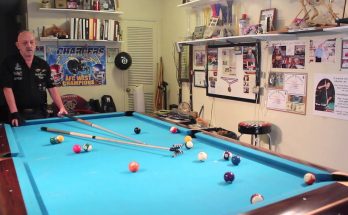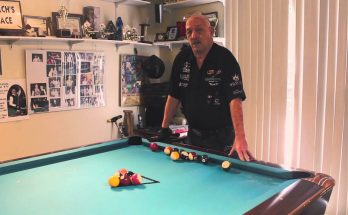Bank Shots
When a rail is used to help pocket the object ball it is called a bank shot. Usually a bank shot refers to hitting the object ball into a rail before it is pocketed. When the cue ball hits a rail first it is also called a kick shot.
There are many techniques (and books) that will help you aim a bank shot.
Mirror Bank Shot Technique:
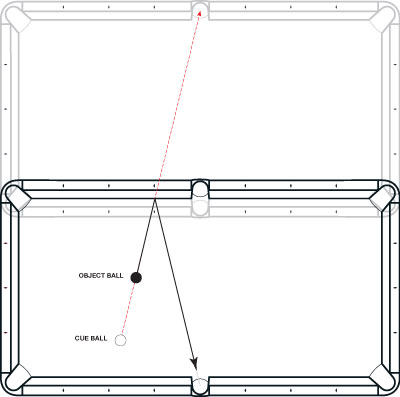
Shoot the ball at a mirror image of the pocket that you are aiming for. Once you have found the proper angle. Use a point on the rail to aim at. Shoot with medium speed and no english.
A More Scientific Bank Shot Technique:
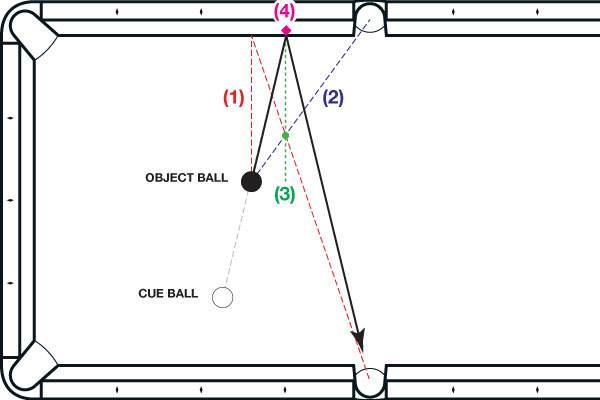
- Draw a line straight from the object ball to the rail. From that spot draw a line to the target pocket.
- Then draw a line from the object ball to the pocket opposite the target pocket.
- Find the point where those two lines cross and draw a line straight to the rail.
- This is the point where you aim the object ball.
- Shoot with medium speed and no english.
Speed and English affect the angle of deflection.
When learning to bank it is important to shoot with medium speed and no english. The harder the object ball is hit lessens the angle of deflection. Conversely a soft hit will widen it’s natural angle. Many properly aimed bank shots are missed because the cue ball is not hit in the center, creating spin. The spin will transfer to the object ball and affect the angle of deflection. Once the basic bank shot is mastered, the use of speed and english can be used to help in position play or to get around a ball in the way.
Practicing Basic Bank Shots
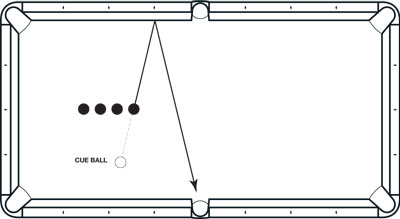
Line 4 balls up in the center of the table (as shown in diagram 3). Using one of the aiming techniques described above, find your aiming point and mark it with piece of chalk. Place the cue ball so it will be a straight shot into the object ball. Aim and shoot with medium speed. If you miss, replace the object ball in the exact place it was in and aim and shoot again. If you pocket the object ball move on to the next ball. Try to hit the cue ball exactly the same way every time. Consistency is the key to learning.
